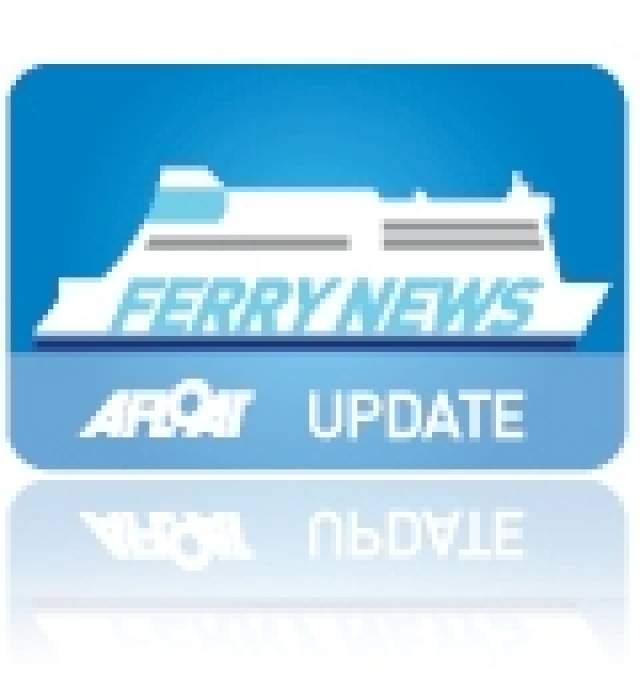#FerryResults - Commenting on the Irish Continental Groups' preliminary statement of results for year end of 31 December 2013, the group's Chairman John B McGuckian commented,''2013 was a successful year for the Group with a solid financial and operational performance in a competitive passenger and freight market place. The improving economic outlook in Ireland has encouraged us in our recently announced investment in the charter of an additional vessel, the Epsilon, which has been trading since mid-December."
Mr. McGuckian added, "RoRo freight volumes are up 18% year on year, to date, despite adverse weather conditions which have led to cancelled sailings."
Below are extracts from the preliminary results, which focus on the operating review of the Irish Ferries division:
Revenue in the division was 1.1% higher than the previous year at €161.7 million while operating profit (before non-trading items) was €24.9 million compared with €22.4 million in 2012.
The increase in profit was due principally to increased freight revenue and lower bunker (fuel) costs partially offset by reduced passenger revenue.
Fuel cost in the division was down €3.5 million (8.9%) to €35.8 million. Revenue in the first half of the year was flat at €69.4 million (2012: €69.5 million), while the second half saw an increase of 2.0%, to €92.3 million (2012: €90.5 million).
Passenger: Given the weak economic backdrop in our main markets, which affects consumers' propensity to travel, Irish Ferries' car carryings remained resilient during the year, at 350,900 cars, (2012: 353,800), down slightly (0.8%) on the previous year.
This is broadly in line with the overall market performance into and out of the Republic of Ireland, which we estimate to have been flat year on year. Irish Ferries' passenger numbers carried were up 1.6% at 1.568 million (2012: 1.544 million).
In the first half of the year, our passenger volumes were up by 0.3% and car volumes were down by 4.2%. In the second half of the year, which is seasonally more significant, the growth in passenger numbers was 2.6% while cars carried were up by 1.6% compared with the same period last year. During 2013 sterling was weaker than in the previous year which provided a headwind in our passenger segment.
Our business benefited from the start of a recovery in demand in the British market for Ireland's Tourism product where overall visitor numbers grew slightly following four years of serious decline. Britain continues to provide the largest proportion of passenger traffic for Irish Ferries amongst all of the countries where we source income and the continuation of Ireland's attractiveness in that market is critical to our future growth.
Freight: The Republic of Ireland's RoRo market returned to growth with a 3% increase in overall market carryings during the first half of the year followed by a 6% increase in the second half, to provide full year growth of 4%. This is a welcome sign of Ireland's return to improved economic health.
Irish Ferries' carryings, at 205,300 freight units (2012: 183,700), were up 11.8% in the year reflecting a strong performance by Irish Ferries relative to the market (volumes were up 7.9% in the first half and 15.7% in the second half).
The improvement in the RoRo markets informed our decision in the final quarter of 2013 to augment our capacity on the Dublin / Holyhead route whilst also commencing a new service between Dublin and Cherbourg.
The chartered vessel Epsilon will provide a major improvement in our frequency on Dublin / Holyhead which we believe will restore some lost competitive advantage. With the vessel's superior freight deck and the number of cabins on board (70), we will also provide a once weekly service to France which will provide additional capacity to our customers throughout the year – much of which we are unable to provide because of the freight deck limitations of the cruise ferry Oscar Wilde (which is a more passenger-oriented vessel). It will also broaden our tourist offering by providing an economy style service to France complementing the Oscar Wilde.
This investment in both the Dublin / Holyhead and Dublin / Cherbourg routes will increase the Ferries' Division cost base but the initiative is targeted to become profitable within a short number of years.
Charter: The MV Kaitaki remained on charter during the year, trading in New Zealand. The charter to P&O terminated on 30 June 2013 following which a new charter commenced, on 1 July 2013, to KiwiRail. The new charter is for a period of 4 years with an option for the charterer to extend the agreement by a further 3 years, out to 2020.
The Princess Anastasia (formerly 'Bilbao') remained on bareboat hire purchase charter to St. Peter Line. Under the terms of the charter party, (forming part of the hire purchase sale agreement), title to the vessel will transfer to the charterers, on payment of the remaining instalments due under the agreement.
To read further information of the results including freight Lo-Lo performance figures, they can be downloaded in full from this link.
































































